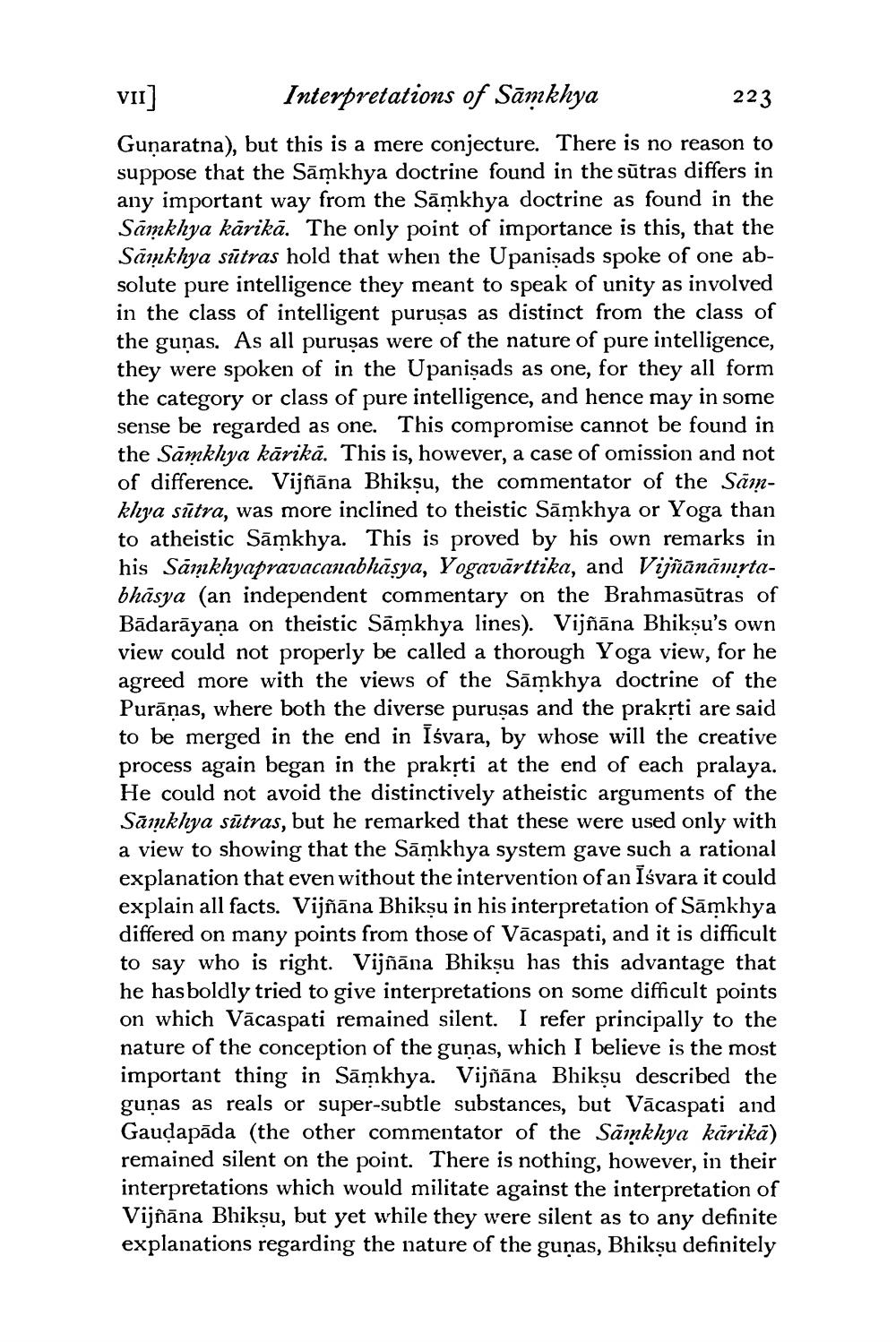________________
VII] Interpretations of Sāmkhya
223 Gunaratna), but this is a mere conjecture. There is no reason to suppose that the Sāmkhya doctrine found in the sūtras differs in any important way from the Sāmkhya doctrine as found in the Samkhya karikā. The only point of importance is this, that the Sāmkhya sūtras hold that when the Upanişads spoke of one absolute pure intelligence they meant to speak of unity as involved in the class of intelligent puruṣas as distinct from the class of the guņas. As all puruşas were of the nature of pure intelligence, they were spoken of in the Upanişads as one, for they all form the category or class of pure intelligence, and hence may in some sense be regarded as one. This compromise cannot be found in the Samkhya kārikā. This is, however, a case of omission and not of difference. Vijñāna Bhikṣu, the commentator of the Sāinkhya sūtra, was more inclined to theistic Sāmkhya or Yoga than to atheistic Sāmkhya. This is proved by his own remarks in his Sainkhyapravacanabhāsya, Yogavārttika, and Vijñānāmrtabhāsya (an independent commentary on the Brahmasūtras of Bādarāyaṇa on theistic Sāmkhya lines). Vijñāna Bhikṣu's own view could not properly be called a thorough Yoga view, for he agreed more with the views of the Sāmkhya doctrine of the Purāņas, where both the diverse purusas and the praksti are said to be merged in the end in Isvara, by whose will the creative process again began in the praksti at the end of each pralaya. He could not avoid the distinctively atheistic arguments of the Sāmkhya sūtras, but he remarked that these were used only with a view to showing that the Sāmkhya system gave such a rational explanation that even without the intervention of an Isvara it could explain all facts. Vijñāna Bhiksu in his interpretation of Sāmkhya differed on many points from those of Vācaspati, and it is difficult to say who is right. Vijñāna Bhikṣu has this advantage that he has boldly tried to give interpretations on some difficult points on which Vācaspati remained silent. I refer principally to the nature of the conception of the gunas, which I believe is the most important thing in Sāmkhya. Vijñāna Bhikṣu described the gunas as reals or super-subtle substances, but Vācaspati and Gaudapāda (the other commentator of the Säinkhya kārikā) remained silent on the point. There is nothing, however, in their interpretations which would militate against the interpretation of Vijñāna Bhikṣu, but yet while they were silent as to any definite explanations regarding the nature of the guņas, Bhikṣu definitely




